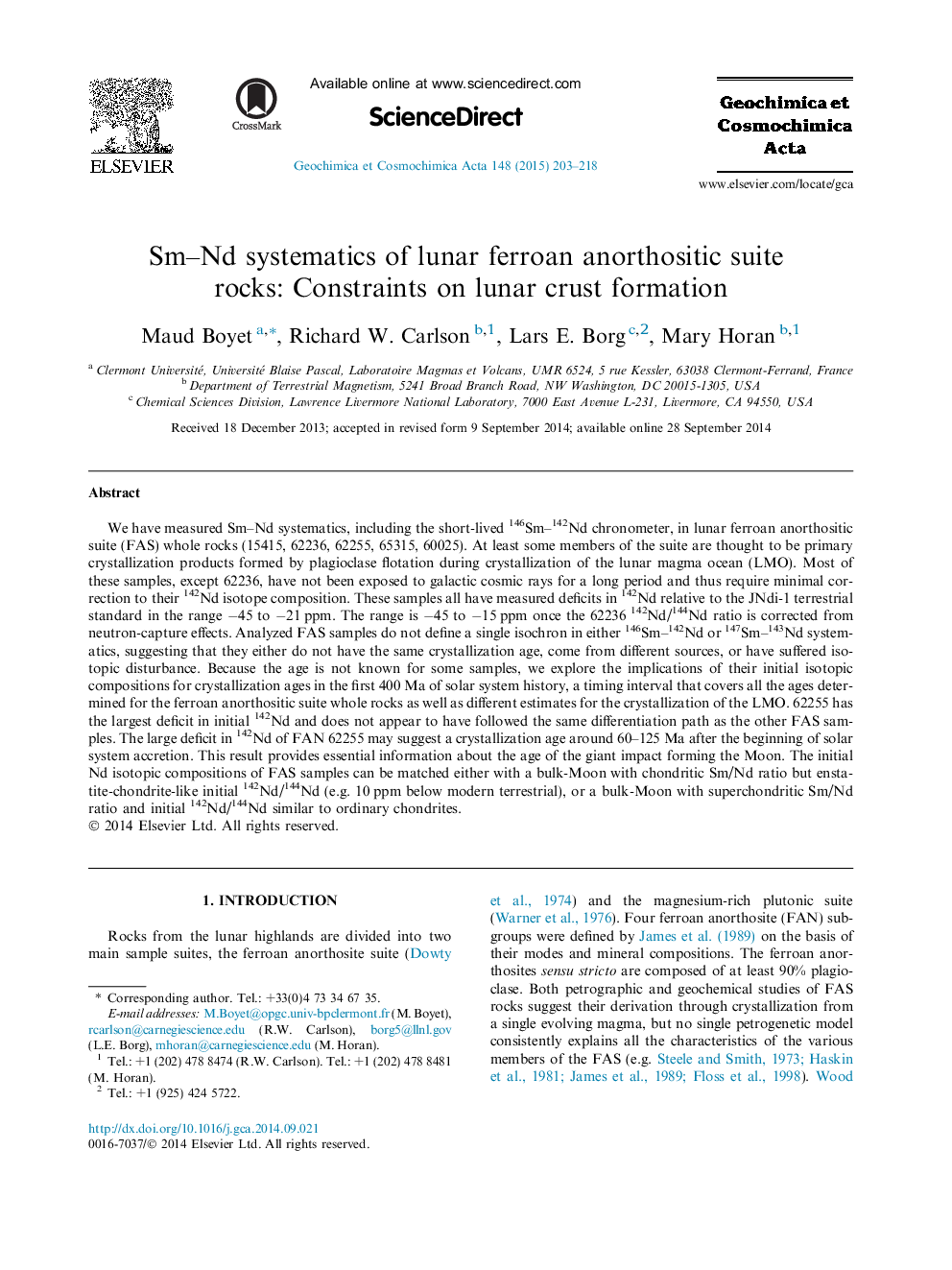| Article ID | Journal | Published Year | Pages | File Type |
|---|---|---|---|---|
| 6438170 | Geochimica et Cosmochimica Acta | 2015 | 16 Pages |
Abstract
We have measured Sm-Nd systematics, including the short-lived 146Sm-142Nd chronometer, in lunar ferroan anorthositic suite (FAS) whole rocks (15415, 62236, 62255, 65315, 60025). At least some members of the suite are thought to be primary crystallization products formed by plagioclase flotation during crystallization of the lunar magma ocean (LMO). Most of these samples, except 62236, have not been exposed to galactic cosmic rays for a long period and thus require minimal correction to their 142Nd isotope composition. These samples all have measured deficits in 142Nd relative to the JNdi-1 terrestrial standard in the range â45 to â21Â ppm. The range is â45 to â15Â ppm once the 62236 142Nd/144Nd ratio is corrected from neutron-capture effects. Analyzed FAS samples do not define a single isochron in either 146Sm-142Nd or 147Sm-143Nd systematics, suggesting that they either do not have the same crystallization age, come from different sources, or have suffered isotopic disturbance. Because the age is not known for some samples, we explore the implications of their initial isotopic compositions for crystallization ages in the first 400Â Ma of solar system history, a timing interval that covers all the ages determined for the ferroan anorthositic suite whole rocks as well as different estimates for the crystallization of the LMO. 62255 has the largest deficit in initial 142Nd and does not appear to have followed the same differentiation path as the other FAS samples. The large deficit in 142Nd of FAN 62255 may suggest a crystallization age around 60-125Â Ma after the beginning of solar system accretion. This result provides essential information about the age of the giant impact forming the Moon. The initial Nd isotopic compositions of FAS samples can be matched either with a bulk-Moon with chondritic Sm/Nd ratio but enstatite-chondrite-like initial 142Nd/144Nd (e.g. 10Â ppm below modern terrestrial), or a bulk-Moon with superchondritic Sm/Nd ratio and initial 142Nd/144Nd similar to ordinary chondrites.
Related Topics
Physical Sciences and Engineering
Earth and Planetary Sciences
Geochemistry and Petrology
Authors
Maud Boyet, Richard W. Carlson, Lars E. Borg, Mary Horan,
